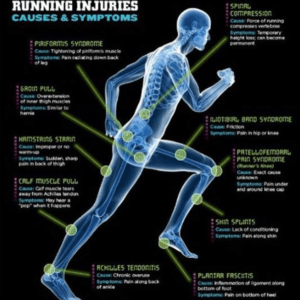[Option 1] SportsMed – Capturing knowledge of global medical community for sport related injuries

SportsMed uses the expertise of global medical and sports enthusiasts’ community to help patients diagnose their problems and undergo the right treatment plan.
Patients with sport injuries have difficulties accessing the right diagnosis
Sports injuries are injuries that occur during sports or exercise. Some result from accidents, while others are due to poor practice, insufficient warm-up or improper use of equipment. Although some are more common than others, and severe injuries require immediate treatment in an emergency, many musculoskeletal injuries call for an evaluation of a specialist and are not easy to identify. Patients often do not know what specialist to see and/or do not have easy access to required expertise. This not only prolongs getting the right treatment, but also extends the recovery process and in some cases, prevents patients from identifying the root cause of their problems.
Addressing the problem by crowdsourcing global medical expertise
Given the community aspect of recreational sport, with people heavily invested in helping others to stay active, and highly uneven geographical spread of specialists capable of diagnosing the problems, I propose to use the expertise of global medical and sports enthusiasts’ community to help patients diagnose their problems and undergo the right treatment plan.
Value creation
There are several aspects of this crowdsourcing approach that benefit both patients and expertise providers. Firstly, by utilizing the medical knowledge of the global medical community and sport enthusiasts who have undergone similar experience, we are able to provide an assessment of patient’s condition more effectively than an individual doctor would. Secondly, providing a one stop platform of expertise enables patients to save both time and money by avoiding multiple visits to various specialists in the traditional medical system. Thirdly, this platform enables medical professionals to tap into a wider set of problems and work with colleagues from around the world to deepen their knowledge and expertise.
How it works?
Patients
- Provide your information: Patients submit his or her medical information, including notes from past doctor visits, test results, own analysis of how the injury happened, etc. This is done via online questionnaire that can be made anonymous if the patient choses so.
- Choose the community of solution providers: Patients can then decide whether to submit their case to a team of medical professionals, sport enthusiasts or a mixed team that would work together on identifying the problem.
- Set your timeline: Patients can choose the amount of time his or her case remains “on the market” – value capture could experiment with various pricing tiers that incentivize expertise providers to take up the case
- Get results: Patient receives results he or she can take to the hospital to receive treatment
Solution providers
- Become a solution provider: Doctors and sport enthusiasts can sign up to the platform and in the case of doctors, provide a proof of their qualification. Their application will be reviewed and if accepted, they will be certified to participate on the platform.
- Choose the problems you want to work on: Once approved, expertise providers can choose the projects they want to work on. Choice can be made based on the area of expertise, reward provided by the patient, team already engaged / committed to solving the problem, etc
- Collaborate with your team: Expertise providers team up with other interested parties to form a team and work on the problem under the supervision of platform’s staff.
- Provide results: Expertise providers come up with a diagnosis and a set of recommendations that patient can discuss with their doctor to receive the treatment.
Value caption
Platform could experiment with several ways of capturing value or introduce models that are specific to the geography in which the patients live in. Several options I see are:
- Patients monthly membership subscription – this would lead to various tiers of expertise providers’ availability (the later could be ranked based on the quality and or quantity of participation on the platform thus far).
- Partnerships with hospitals – participating hospitals would agree to accept platform’s diagnosis for a fee paid to the platform
- Adds on the platform
- Pay for performance – monetary award from patients to expertise providers
Crowdsourcing model vis-à-vis current system
This idea is based on the belief that a lack of specialists in sports injuries results in expensive and time consuming healing process for the patients, that could be outsourced to the crowd of medical professionals and sports enthusiasts around the world who are familiar with patient’s particular condition.












That’s an interesting idea, Katarina! Two issues come to mind though:
1- I’m worried about attracting enough doctors/qualified medical professionals to join such a platform. While I agree with your point on recreational sports having a strong community sense, I don’t think sports doctors are necessarily part of that culture. So, I can’t help but wonder, what’s in it for the doctors? ZocDoc comes to mind as an example of a platform that has struggled in engaging doctors online.
2- In the absence of qualified medical professionals, should fellow athletes really be giving medical advice? I’d be worried about liability. Not to mention that diagnosis could get really difficult if all you have is a typed-up description of the symptoms.